Open Rhinoplasty
(External Approach)
About the procedure
Open rhinoplasty surgery is a procedure in which the incision used to access the structures of the nose results in broad exposure of the underlying cartilage and bone. Typically, a small incision is made across the underside of the nose that is then connected to incisions made within both nostrils. The skin overlying the nose is reflected up and off of the structural framework of the nose. This allows the surgeon to have broad visibility of all the components of the nose.
An open rhinoplasty procedure allows for the best visualization of the nasal structures when correcting both cosmetic and functional concerns of the patient. Less invasive techniques such as a closed rhinoplasty afford patients a shorter recovery period and some times more cost-effective option, however, the open rhinoplasty method continues to be widely used for its superior visualization. During an open rhinoplasty, an incision will be made at the columella, just beneath the tip of the nose. The nose will then be retracted backwards, dissecting the nose cartilage with care being taken to not incise the medial crura, the cartilage that separates the nostrils. The flap will be raised off of the nose for maximum exposure and work can now be done to reshape the nasal tip, bridge, nostrils, or septum repair. Once completed, the flap will be redraped over the bone framework and external contouring and shaping is completed. The incision will be closed with sutures and an external splint or cast will be placed over the nose.
Choice of approach is ultimately up to the surgeon and should be determined by the anatomy and the degree of exposure required based on the preoperative evaluation. The closed (endonasal) approach has the advantages of minimizing edema and avoid external scars. However, it affords less exposure than the open (external) approach. The main advantage of the open approach is that it allows for accurate visualization and precise positioning and securing of grafting material.
Recovery
After an open rhinoplasty, facial swelling and bruising is commonly present. An external splint will be applied for 5 days to stabilize the underlying nasal framework. While surrounding swelling of the cheeks and lips will subside within 2 weeks, nasal swelling will last as long as a month. The nose itself might continue to heal over the 6-12 months. A scar at columella will be fader in a few weeks. Makeup and eyeglasses may be worn as soon as the cast is removed.
Open approach
Advantages
- Better surgical view than closed approach
- Scar adhesion or contracture can be better adjusted in the revisional operation
- In case of tip plasty, offers best symmetry and support
- Allows better hemostasis, which decreases the risk of hematoma
Disadvantages
- Columella scars. But the scar is less visible, and even when it is visible, can be corrected with laser therapy or scar revision treatments
- More and longer swelling, especially at nasal tip
- Longer operation time
Indications
- The closed approach can be used for most dorsal augmentation, hump reduction, osteotomy and tip plasty procedures
- Used for all rhinoplasty procedures that are difficult to proceed using the closed approach. This includes correction of long nose, severely bulbous tip, short nose, secondary contracted nose, and deviated nose
.png)
.png)
.png)
.png)
.png)
Scars after Open Rhinoplasty
Ideal candidates
Open rhinoplasty is not recommended for candidates under the age of 18 unless correction is due to injury, however, need for surgery must be evaluated on a case-by-case basis because children mature physically and emotionally at varying rates. The ideal candidate for an open rhinoplasty has a crooked nose, multiple components contributing to nasal deformity, needs an extensive cartilage graft, or the correction focuses on modifying the nasal tip. Candidates that are undergoing revision rhinoplasties also benefit from an open approach.
Side effects
Side effects from an open rhinoplasty may include numbness, nosebleeds, scarring, swelling, infection, and under- or over-correction that necessitates revision rhinoplasty.
1) Fixing a Big Nose (Widen Bridge or Bulbous Tip)
Tip Plasty or Tip Reduction is a cosmetic procedure that focuses on re-shaping the nose to meet the natural proportions of an individual patient’s face. This surgery is performed in instances where the patient is unsatisfied with the aesthetic appearance of his or her nose, and also in circumstances where the patient is experiencing impaired breathing due to a structural issue or defect within the nasal cavities.
Surgical solutions for nose reconstruction will vary considerably depending on the personal goals of the patient. While some procedures will focus on improving one area of the nose, others will focus on modifying two or more areas. For example, rhinoplasty is commonly performed on patients seeking to improve the look of the nose by reducing its length, reducing the width of the bridge (lateral osteotomy), smoothing out the profile (medial osteotomy) by removing unwanted bony bumps, hooks, or other misshapen sections, reducing oversized nostrils or fixing asymmetrical ones, and modifying bulbous or boxy tip, drooping, or otherwise undesired nasal tips, among other symptoms.
Rhinoplasties are typically outpatient operations, and patients will receive either general or local anesthesia to eliminate pain during the procedure. The surgeon will then reshape, remove, or otherwise alter the bone and cartilage to create a new nose shape according to the goals of each patient.
Patients' Photos from Clinic
.png)
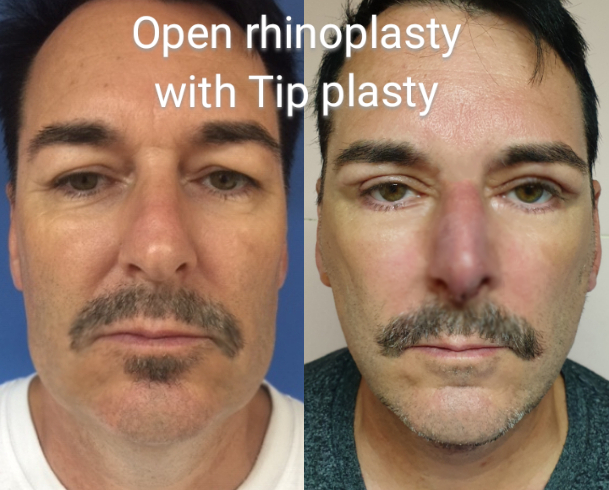
Bifid (Bossa), bulbous tip- Double dome suturing and columella strut graft
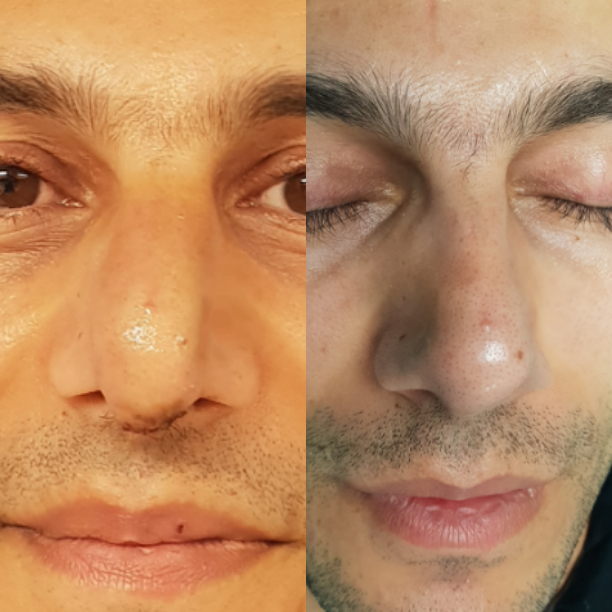
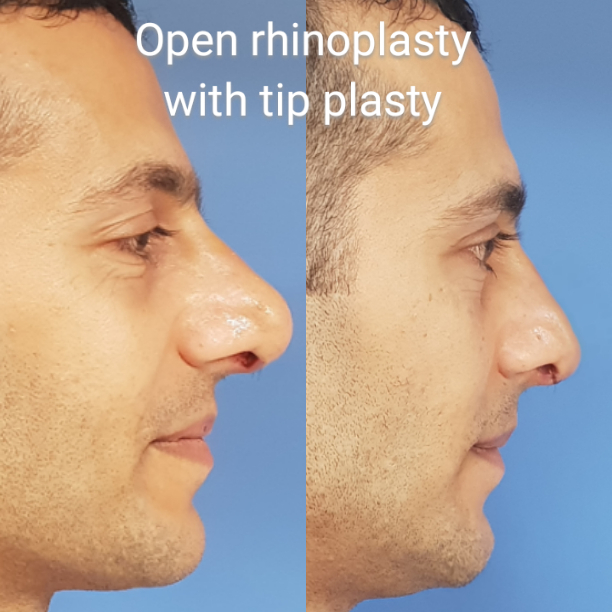
Large with Overprojected Nose - Dorsal hump reduction and Medial crura vertical excision
2) Septum Correction in Short or Long Nose or Pollybeak Deformity
When rhinoplasty is performed to correct a septum, the purpose is primarily restorative vs. cosmetic, though both the function and the appearance of the nose can be improved at the same time. The surgery is meant to open up the nasal cavities by realigning crooked nasal cavities to facilitate better airflow and enhance breathing, especially at night. The surgery will focus on re-aligning the nose to eliminate blockages where the airflow is stifled or compressed (usually due to a septum that’s collapsed or obstructing the pathway of air through the nose).
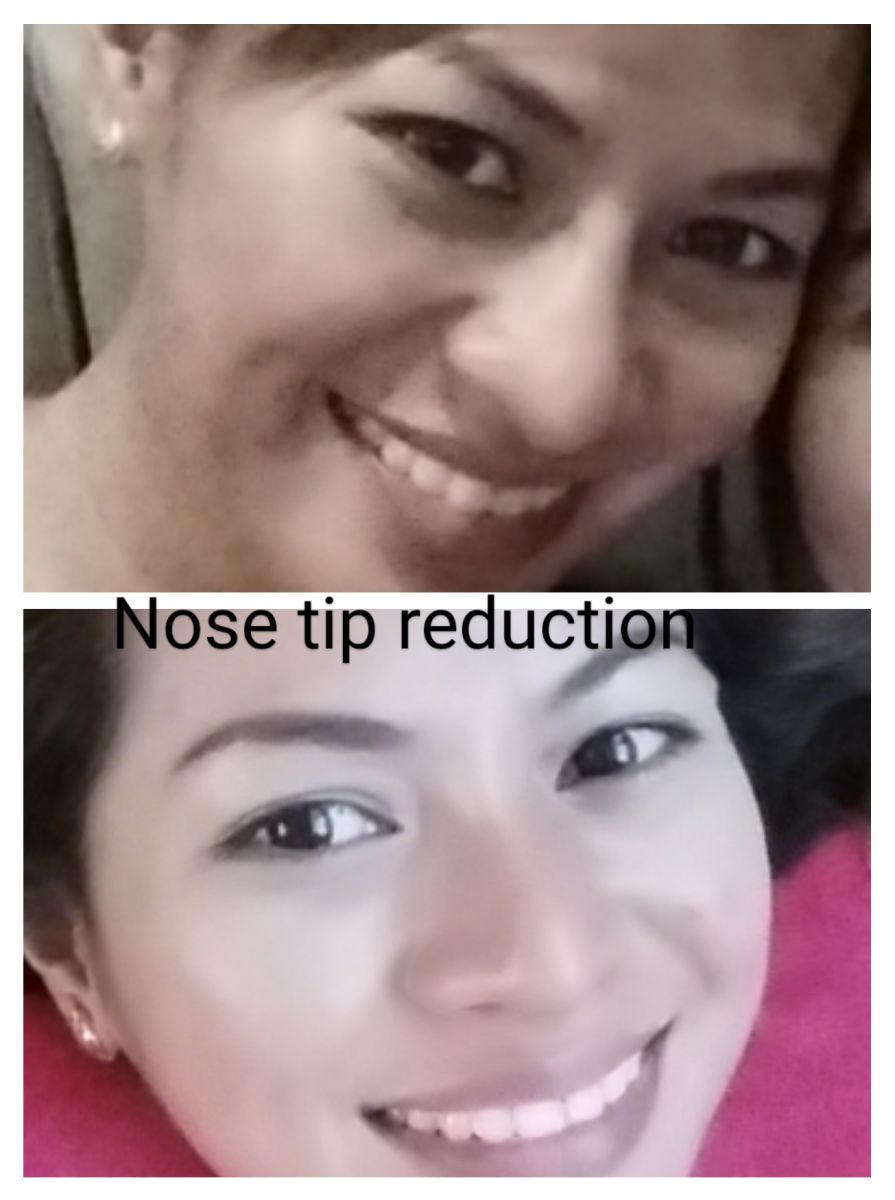
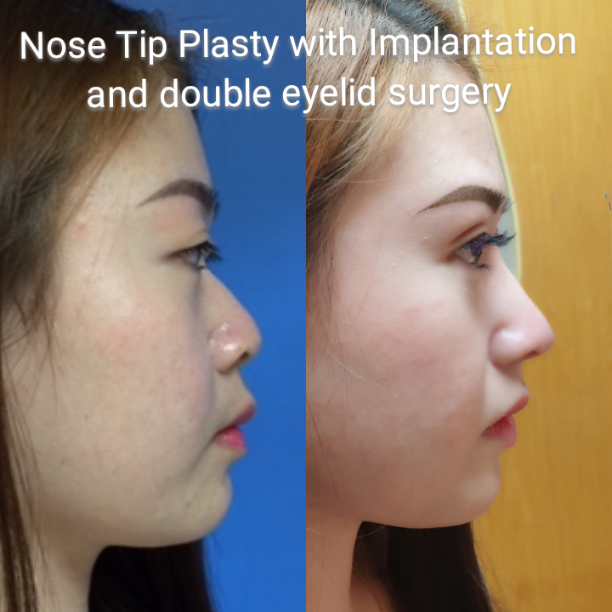
Long nose with Hanging columella and Bulbous tip- Pollybeak deformity- Dorsal hump reduction, Culumella strut graft
Cartilagenous hump removal, Tounge-In-Groove and lateral crural steal technique
and Medial crura vertical excision
.png)
.png)
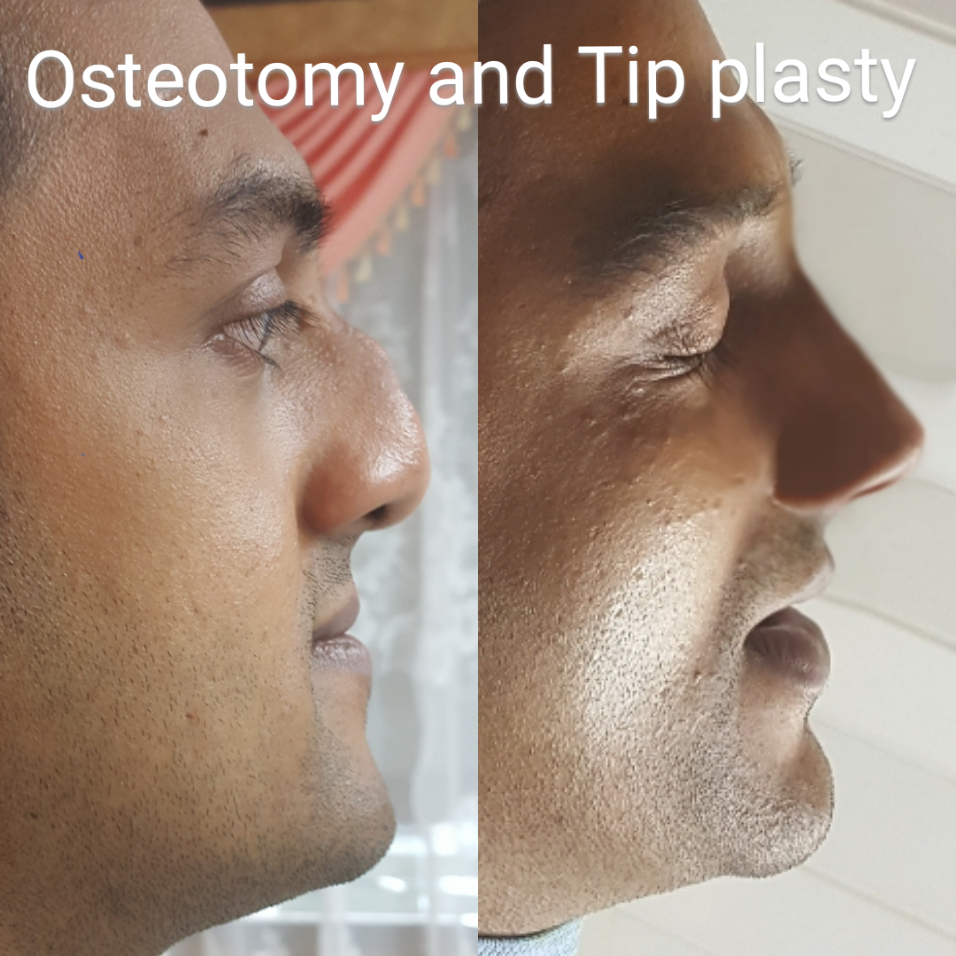
.png)
Pollybeak deformity- Dorsal hump reduction, Large Nose with bulbous tip- Cartilagenous hump
septal extension and Columella strut graft removal and medial vertical excision
.png)
.png)
3) The Ideal Nostril Width for Your Face Shape
The perfect size of a person's nostrils and nose width can vary, based upon several factors that are specific to that individual patient undergoing "Alarplasty or Nasal Base Reduction".
The goal is to create a new nose that looks ideal for that person's facial shape - one that perfectly compliments their countenance and blends in harmony with their face. However, a person can get a general idea of their ideal symmetrical nostril width by imagining two lines running vertically downward from the inside corners of their eyes to each side of their nose to approximate the ideal nose width for them.
Those lines represent the ideal nose width and the nostril borders. Excellent and experienced surgeons will be able to alter large nose bridges and tips and reduce them without causing the nostrils to flare outward while reducing the size of outsized nostrils.
.png)
.png)
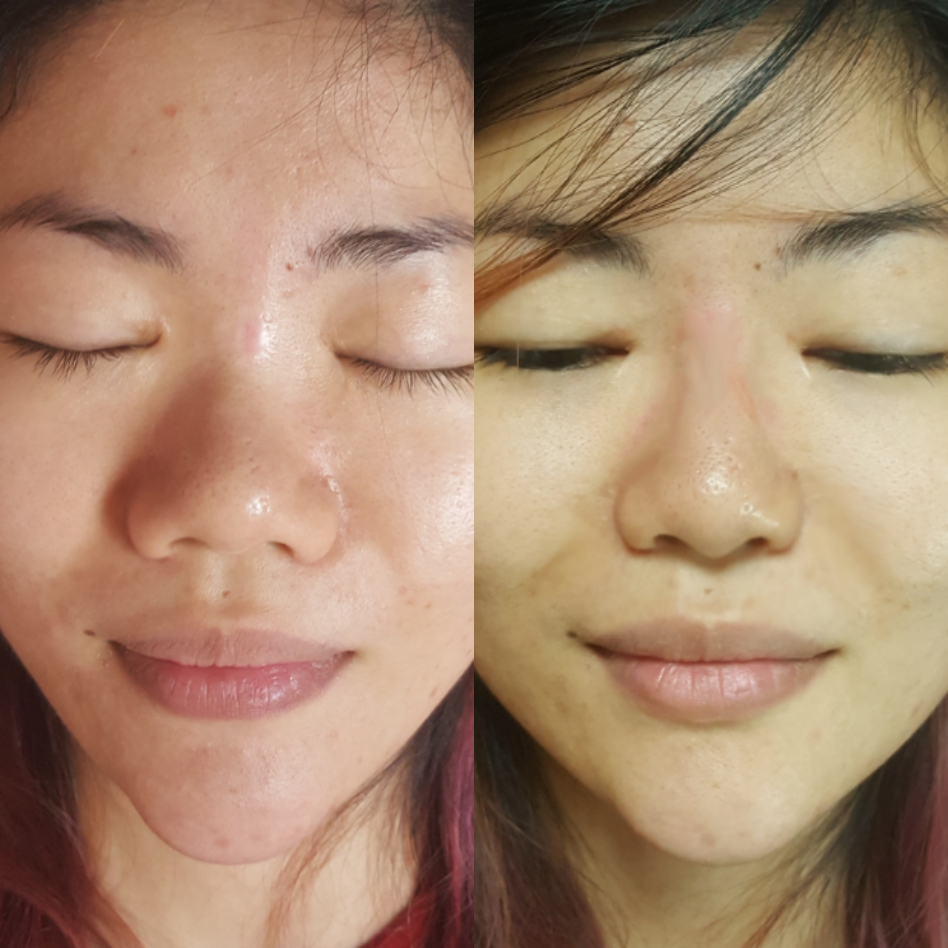
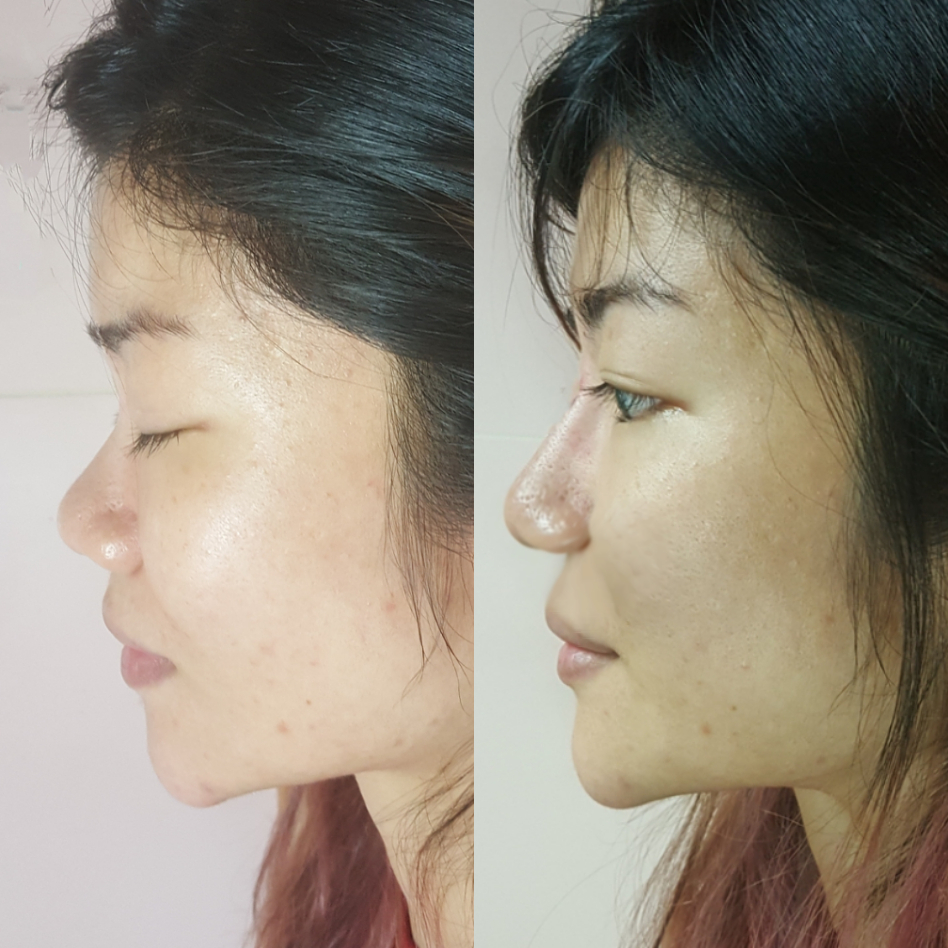
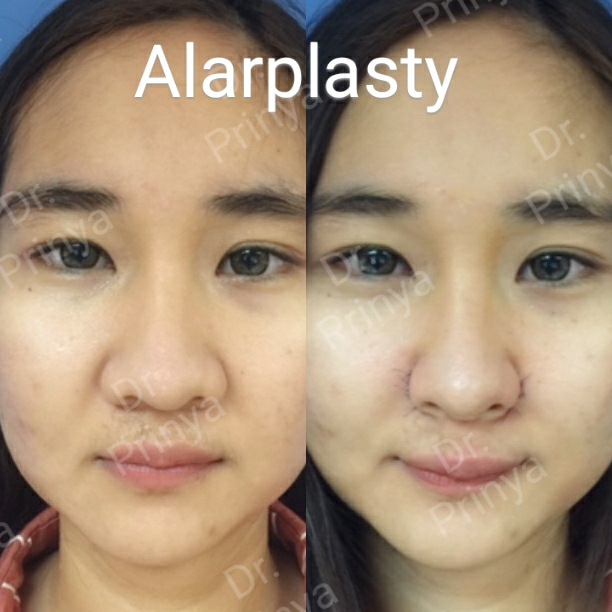
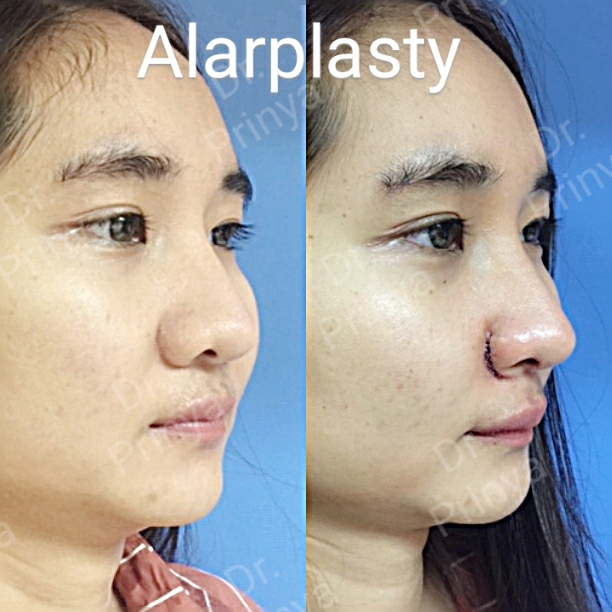
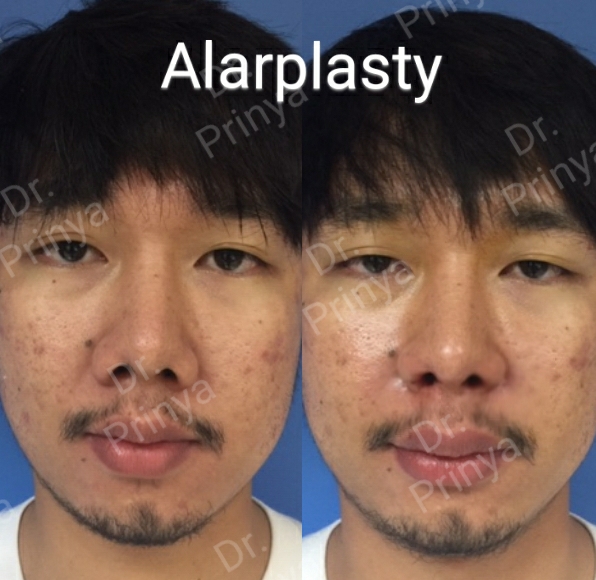
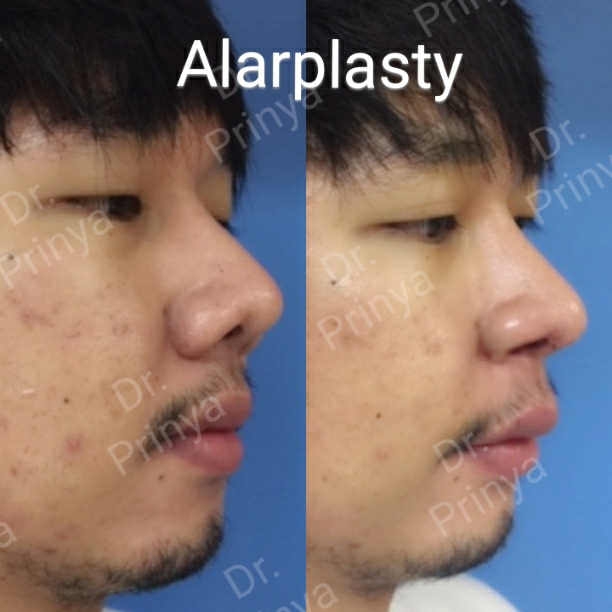
.png)
.png)
Alar Base reduction for smaller and raising wings upward
.png)
.png)
Treatments to Obtain the Ideal Nose Shape: Surgery and Dermal Fillers
Rhinoplasty: This is one of the most popular cosmetic surgical procedures, according to the American Society of Plastic Surgeons. Whether called "nose reshaping," the surgery isn't always just about aesthetics. Instead, rhinoplasty can help correct deviated septums and other structural problems that have hampered proper breathing in patients.
Dermal Fillers: Before leaping into rhinoplasty, certain individuals may choose to visit a plastic surgeon or medical office for dermal filler injections to alter the appearance of their nose. The "injection nose job" features dermal fillers that are injected into the bridge of the nose to provide a more even or aesthetically-pleasing shape.
While the "dermal filler nose job" is a quick and easy way to change the shape of the nose without undergoing the initial expense of rhinoplasty surgery, it is also temporary and not as dramatic as the result when compared to the big changes that rhinoplasty can provide. Fillers require continual upkeep and follow-up injections every 1-2 years.
4) Crooked Nose, Short or Long Nose
A crooked nose angle is simply one that is out of central vertical alignment with the rest of the face. How curved a nose depends on its cause. For instance, physical trauma that causes a broken nose can result in a severe twist, while a small nasal tumor may cause only slight crookedness.
A deviating nasal structure can be classified as either a C-, L-, or S-shaped. In most cases, a crooked nose causes only cosmetic concerns. In other cases, nose deformity or nasal trauma causes breathing problems or other medical challenges.
There are various surgical and nonsurgical treatments for correcting crooked noses. These include a plastic surgery procedure called rhinoplasty (“nose job”), placement of dermal fillers like Juvederm®, and makeup application techniques.
What Causes Crooked Nose?
According to Medscape, “asymmetric noses are typically characterized by the deviation of the bony upper third and/or the cartilaginous lower two-thirds of the nose.”
To better understand treatment options, it is important to understand the cause of a crooked nose. There are two primary classifications. The first type is caused by a deformity of the nasal structure’s complex system of bone, cartilage, and fibrous tissue.
Nasal deformity may result from: Physical trauma that causes a broken nose, Nose surgery (rhinoplasty), Severe nasal infection, Genetic defects, Tumors
The second type of crooked nose results from a medical condition called a deviated septum. The nasal septum is the cartilaginous wall that divides the right and left nostrils. When a septum deviates, it shifts to either the right or left, partially blocking off one of the nostril chambers.
Aside from causing the nose to appear crooked, a deviated septum can also cause challenges sleeping, loud breathing, and nose bleeds.
Nasal Anatomy and Autologous graft
Cartilage grafts: Cartilage tissue removed from elsewhere in the body, used to straighten, strengthen, or enhance the appearance of the nose
Cartilaginous septum: Hyaline cartilage tissue that forms the septum
Caudal septum: Portion of the septum located directly behind the columella
Columella: Skin and cartilage bridge that forms the bottom of the nose between the nostrils
Deviated septum: Displacement of the nasal septum to one side of the nose
Dorsal septum: Portion of the septum above the caudal septum
Nasal dorsum: The bridge that connects the nasal tip to the face
Nasal valve: Narrow area between the mid-nose and lower nose that limits air intake
Saddle nose: Loss of nose height because of a collapsed middle valve or nasal bridge
Boxy and Bulbous tip: Enlarged nose tip from thick vestibule tissue or separated lower alar cartilage
Short or Upturned nose: May be from genetic or fibrotic retraction from previous nose operation
Long nose or Pollybeak deformity: Too long septal cartilage or short columella
Septal cartilage: The cartilage tissue that forms the nasal septum
It is best to work with a plastic surgeon to figure out the cause of a crooked nose. This allows the doctor the opportunity to determine the best treatment option for correcting it.
Fixing a Crooked Nose:
Correcting nasal deformities and septal deviation is a complex undertaking with various patient-specific variables that must be accounted for. To determine the best treatment option, a plastic surgeon has to carefully consider facial asymmetry, nasal obstruction and function, and nasal bone proportion.
Various surgical procedures are used to correct a nasal fracture or otherwise deviated nose. The blanket term for these surgical techniques is rhinoplasty.
Rhinoplasty: It is often recommended in more severe cases of septal deformity or when breathing is obstructed because of a crooked nose.
During an open approach rhinoplasty procedure, an incision is made between the columella between the nostrils to expose the nasal structure with additional incisions inside the nose to correct nose angle. Although scarring is minimal, it is often still visible upon close inspection.
In a closed approach rhinoplasty, the incisions are limited only to the inside of the nostrils, making post-surgical scarring invisible to others. Endoscopic rhinoplasty refers to the use of a special scope to enhance the surgeon’s view of the interior of the nose during a closed procedure.
Septoplasty is commonly recommended for restoring the ideal position of the septum for patients with septal deviation. This technique is used to reshape and straighten the cartilage that forms the septum, and to relieve nasal obstruction that blocks either of the separate airways.
5) Nose Humps and Ethnicity
Certain nose shapes contain features that are the result of ethnicity, such as a dorsal hump. The hump is comprised of bone when it resides in the upper region of the nasal bridge, but likely is a mixture of extra bone and cartilage - or merely cartilage - when the bump is found lower on the nose.
The nasal hump appears on the bridge of the nose, in a fashion curving outward, like a small hill. Such a nasal feature is often genetically influenced. Therefore, family traits that are commonly inherited and passed from parents to children can be the source of a large nasal hump - without ever experiencing any nose injuries.
No matter the source of a misshapen nose, the solution can be the same. An injured or inherited nose can make a big impact on an individual's facial aesthetics. The desired changes can be performed by a board-certified rhinoplasty surgeon who has extensive experience with creating the nasal results desired. It is also crucial to utilize a physician who has experience in performing ethnic rhinoplasty surgeries. However, a quality surgeon will assure the patient to focus on their wishes combined with the physician's knowledge to gain the best results.
Bony Hump removal by Medial and Lateral Osteotomy
.png)
.png)
.png)
.png)
.png)
.png)
.png)
.png)
.png)
.png)
.png)
.png)
Before & After Photos of Open Rhinoplasty
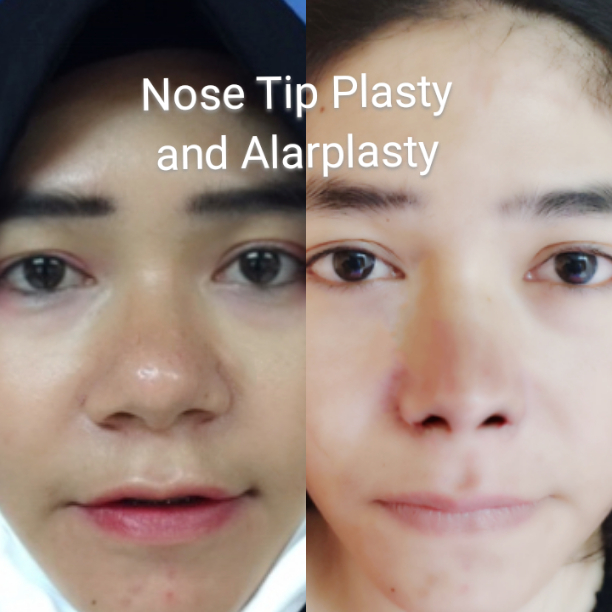
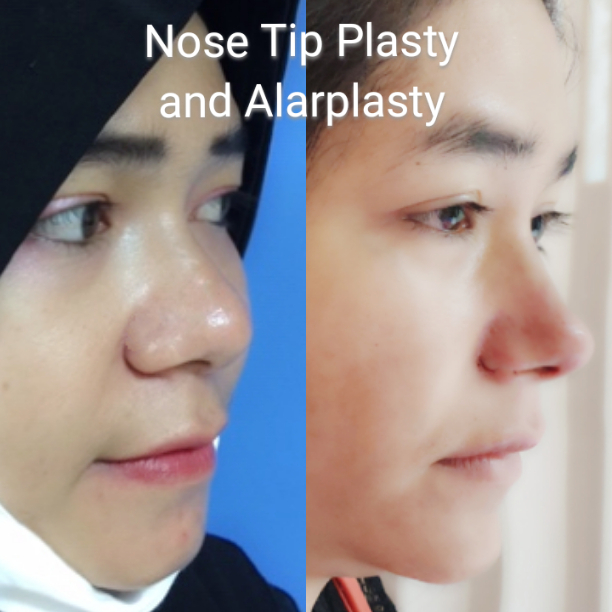
Bulbous Tip and wide Alar - Double-dome suturing and Alar base reduction
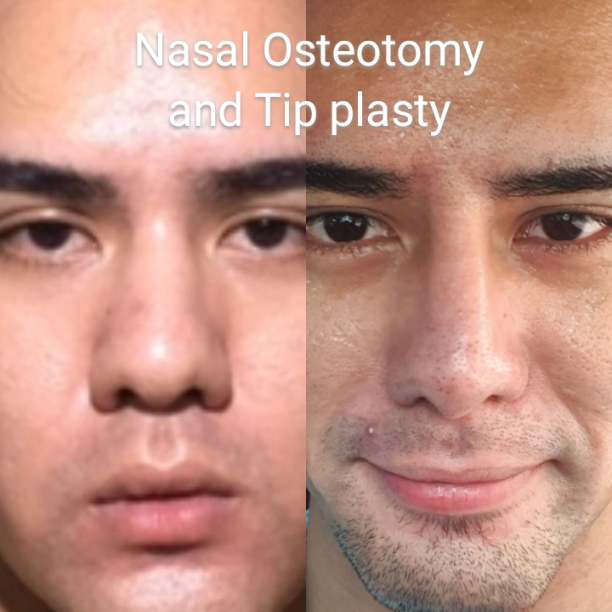
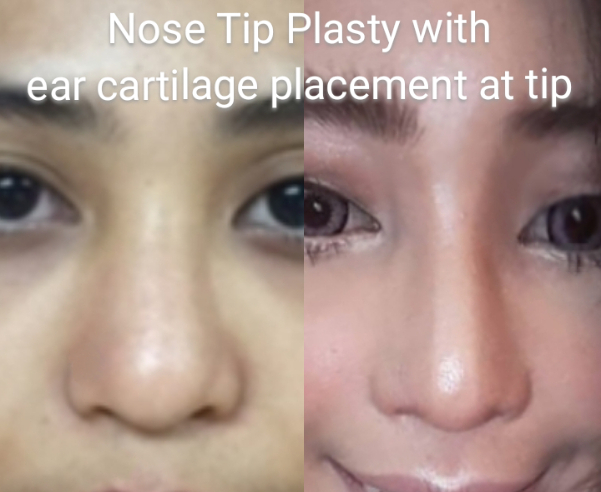
Wide Nose with Bulbous Tip - Lateral Nasal Osteotomy and Double-dome suturing
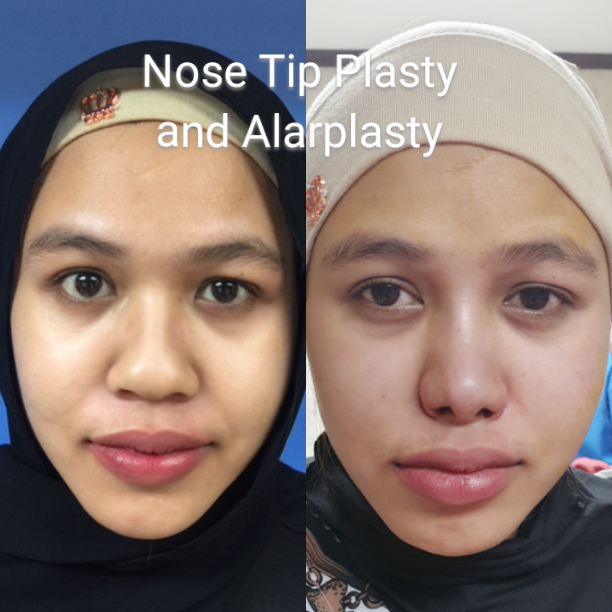
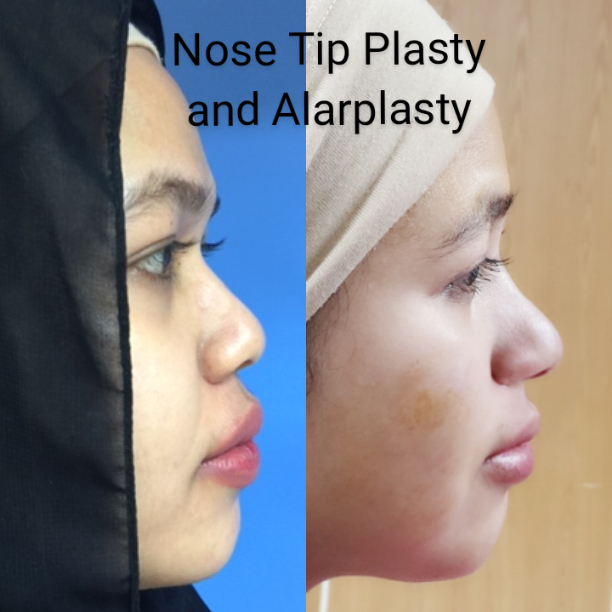
Bulbous Tip and wide Alar - Double-dome suturing and Alar base reduction
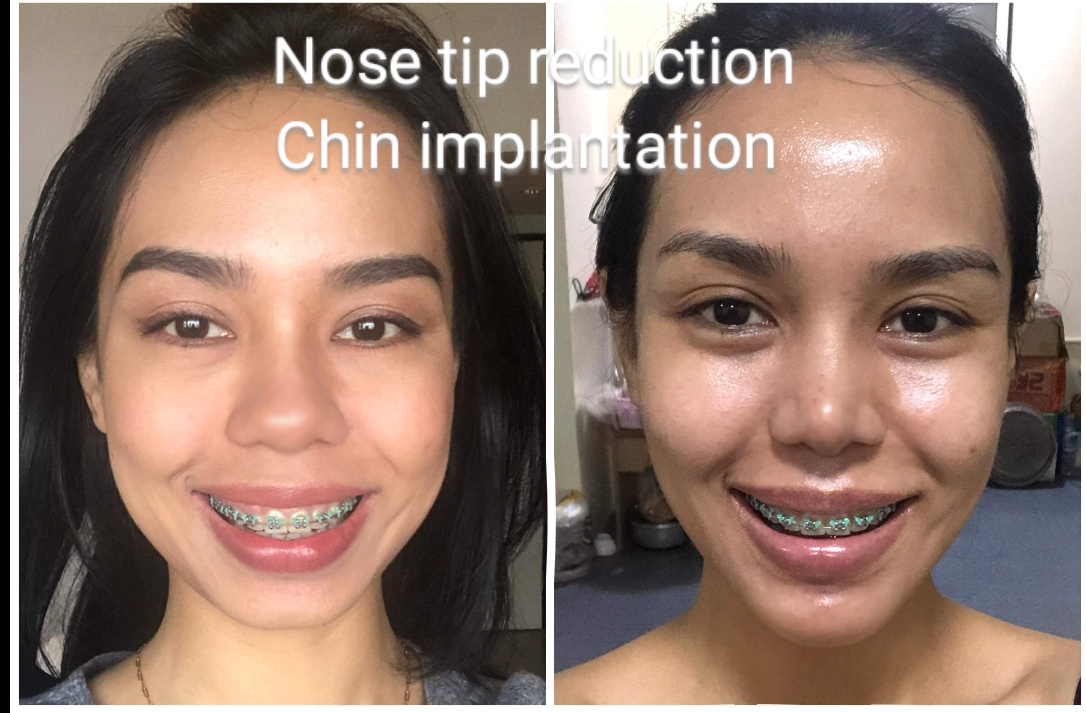
.png)
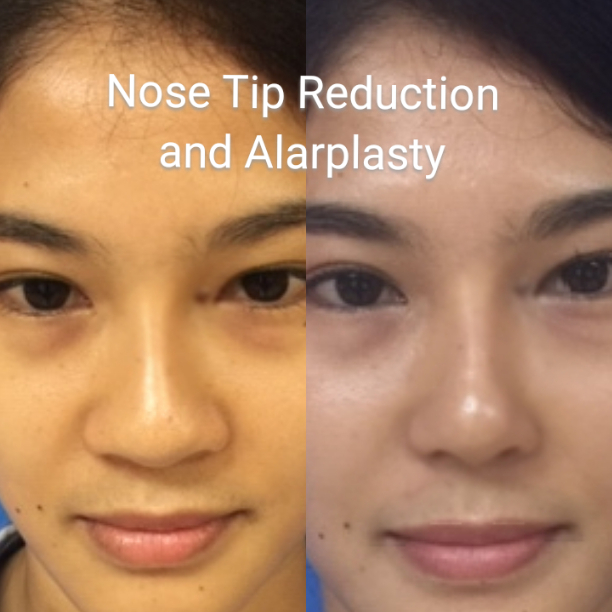
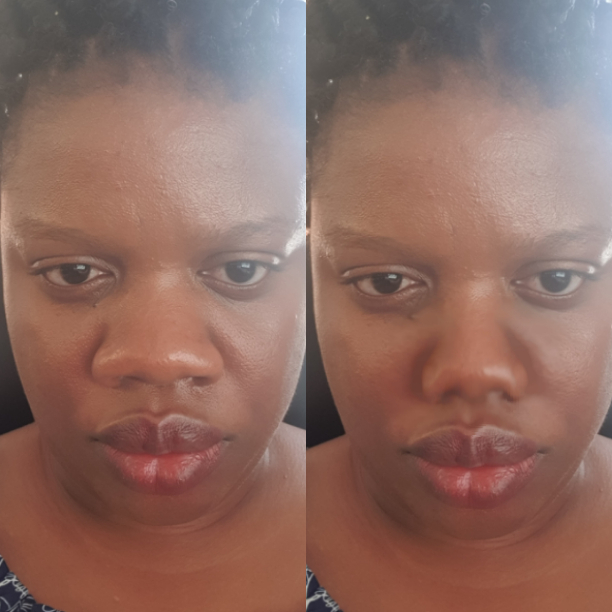
Bulbous Tip and wide Alar - Double-dome suturing and Alar base reduction
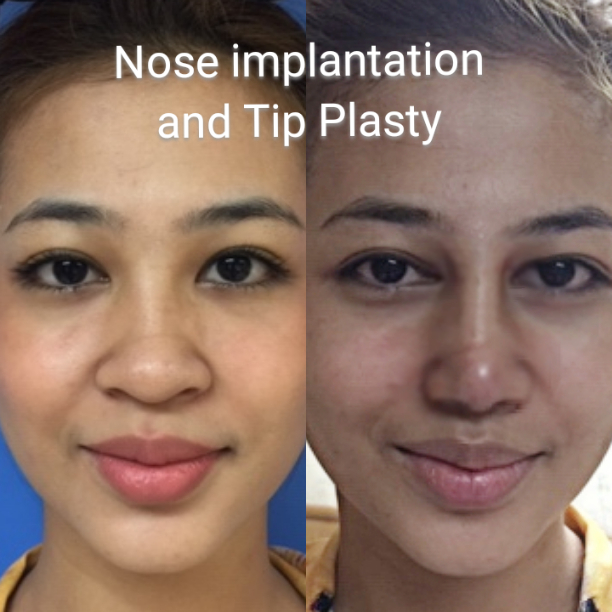
.png)
Bulbous Tip and Wide Alar- Double-dome Wide Nose with Bulbous tip and Hanging suturing, silicone implantation and Alarplasty Columella- Lateral Osteotomy, Double-dome
suturing, Tounge-In-Groove and Resection of
septum
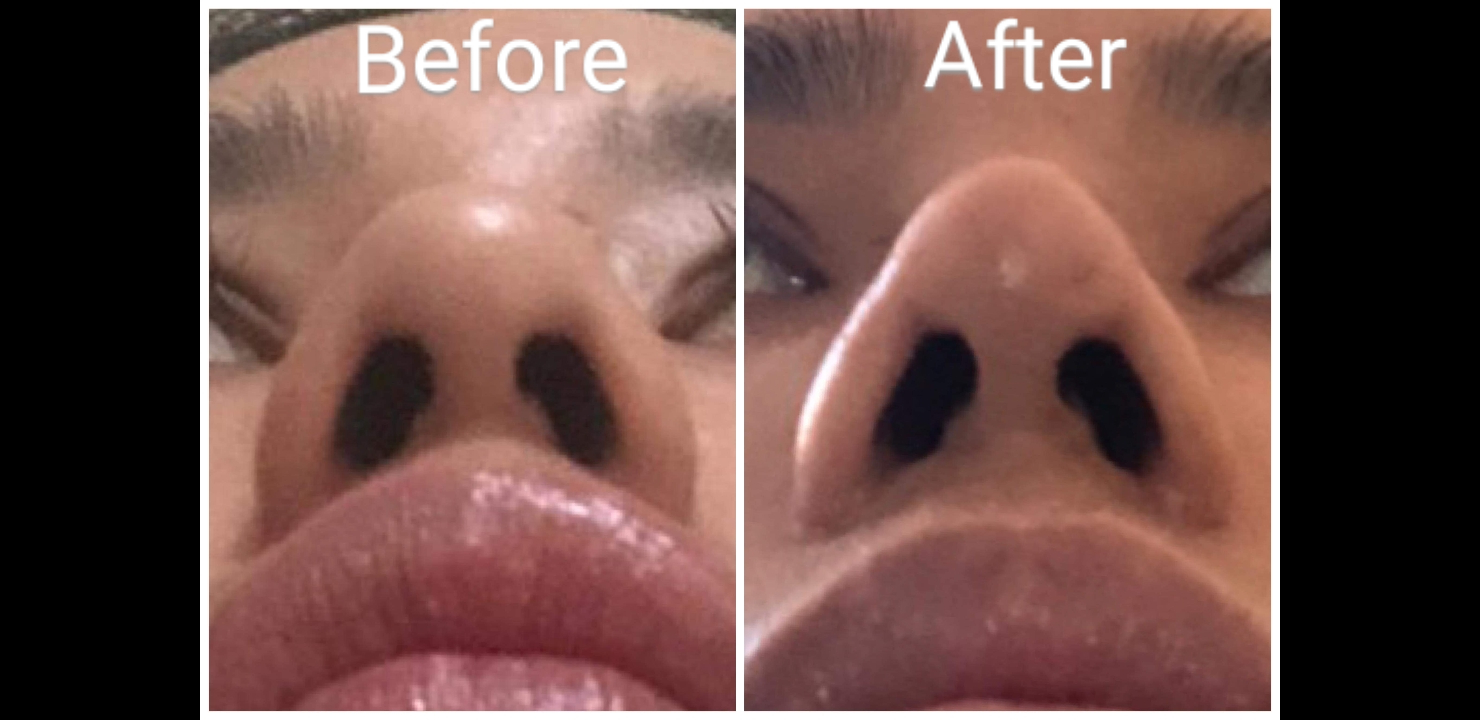
.png)
.png)
Intradomal and Interdomal Suturing
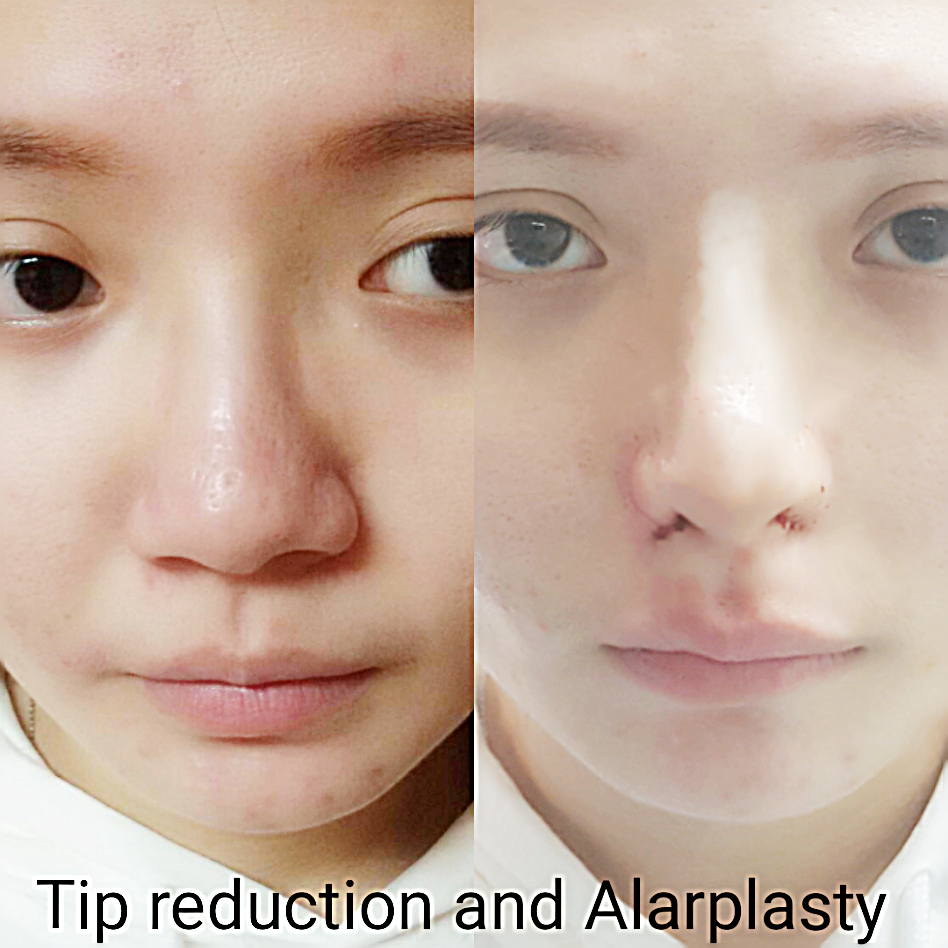
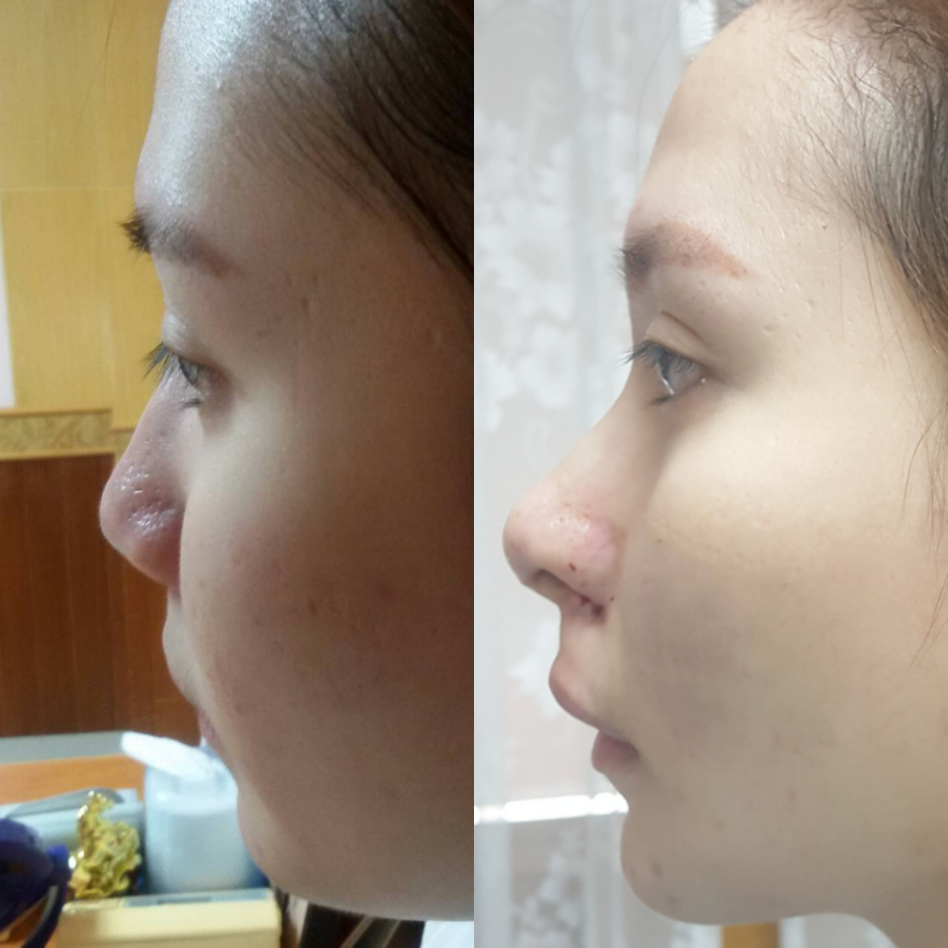
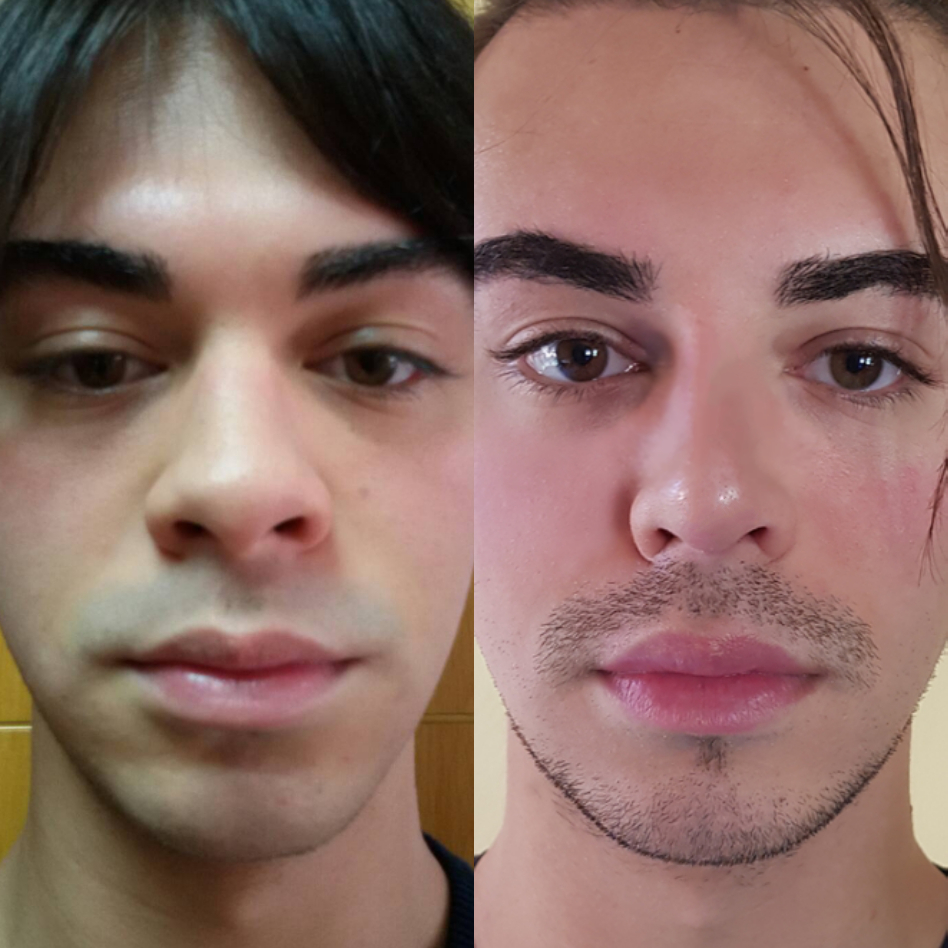
.png)
.png)
.png)
.png)
.png)
Bulbous Tip and wide Alar - Double-dome suturing and Alar base reduction